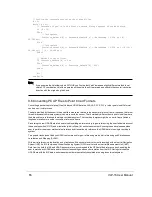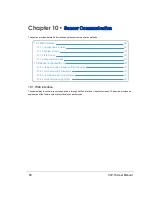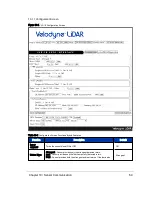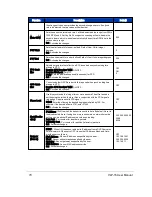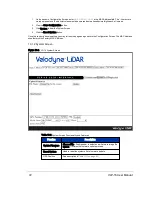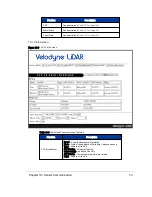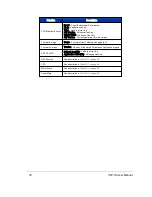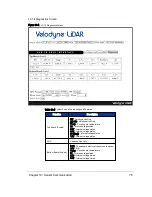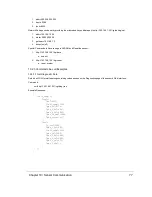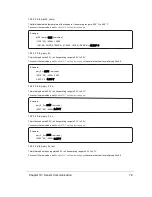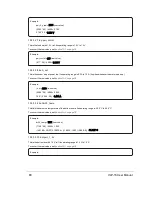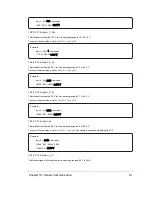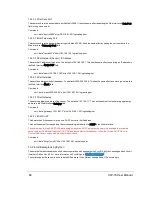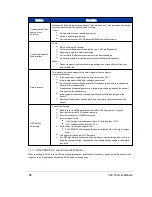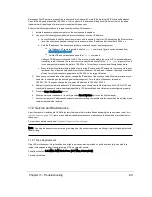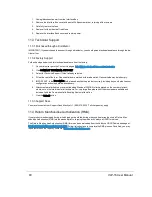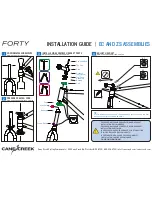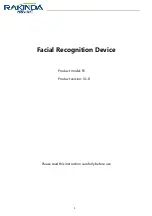
Function
Description
V in — Internal voltage status.
1.25v — N/A.
GPS Position
.
PPS
.
Motor State
.
Laser State
.
10.2 Sensor Control with curl
In addition to the Web Interface, Velodyne LiDAR sensors provide an HTTP interface for programmatic configuration and
control. One of the easiest tools to use for this purpose is curl. curl is a command line program freely available on a wide
variety of operating systems. curl specializes in transferring data between devices using Internet protocols. You can learn
more about curl and libcurl, the library (written in C) it uses to do all the heavy lifting, at this page: https://ec.haxx.se/curl-
does.html. libcurl has bindings for many environments and programming languages.
The sections below show how to command and control a sensor from the command line using curl, and from a Python pro-
gram using pycurl, a Python binding for libcurl.
10.2.1 Using curl with Velodyne LiDAR Sensors
Note:
It is recommended to issue at most one curl command per second to the sensor.
curl takes care of the following items for you. But you should follow them when using libcurl in your software.
Always check the response from the sensor, even if the function used does not return one. (curl can and will
respond with status/error messages.)
Always close the socket connection to the sensor when finished.
10.2.2 curl Command Parameters
To obtain JSON-formatted sensor status, invoke curl with the following URLs:
http://192.168.1.201/cgi/status.json - Returns the current operational state and parameters of the sensor.
http://192.168.1.201/cgi/diag.json - Returns diagnostic information from the sensor.
http://192.168.1.201/cgi/snapshot.hdl - Returns current sensor configuration and status data.
The following sensor parameters can be changed by sending a urlencoded tagged key and data pair to
http://192.168.1.201/cgi/setting:
1. rpm=[integer]
2. returns=[Strongest]|[Last]|[Dual]
Set Field of View by sending a urlencoded key and data pair to http://192.168.1.201/cgi/setting/fov:
1. [start]|[end]=[integer]
Set Sensor Address, Destination Port, or Telemetry Port by sending a urlencoded key and data pair to
http://192.168.1.201/cgi/setting/host:
76
VLP-16 User Manual





